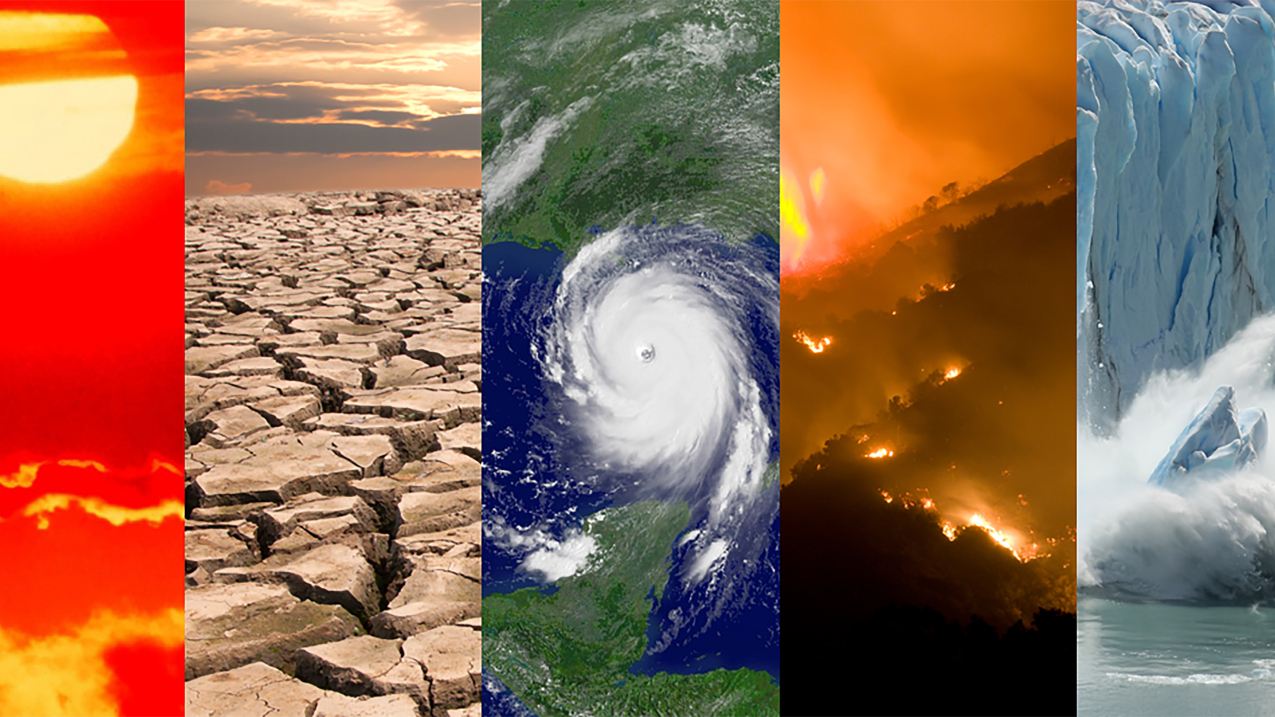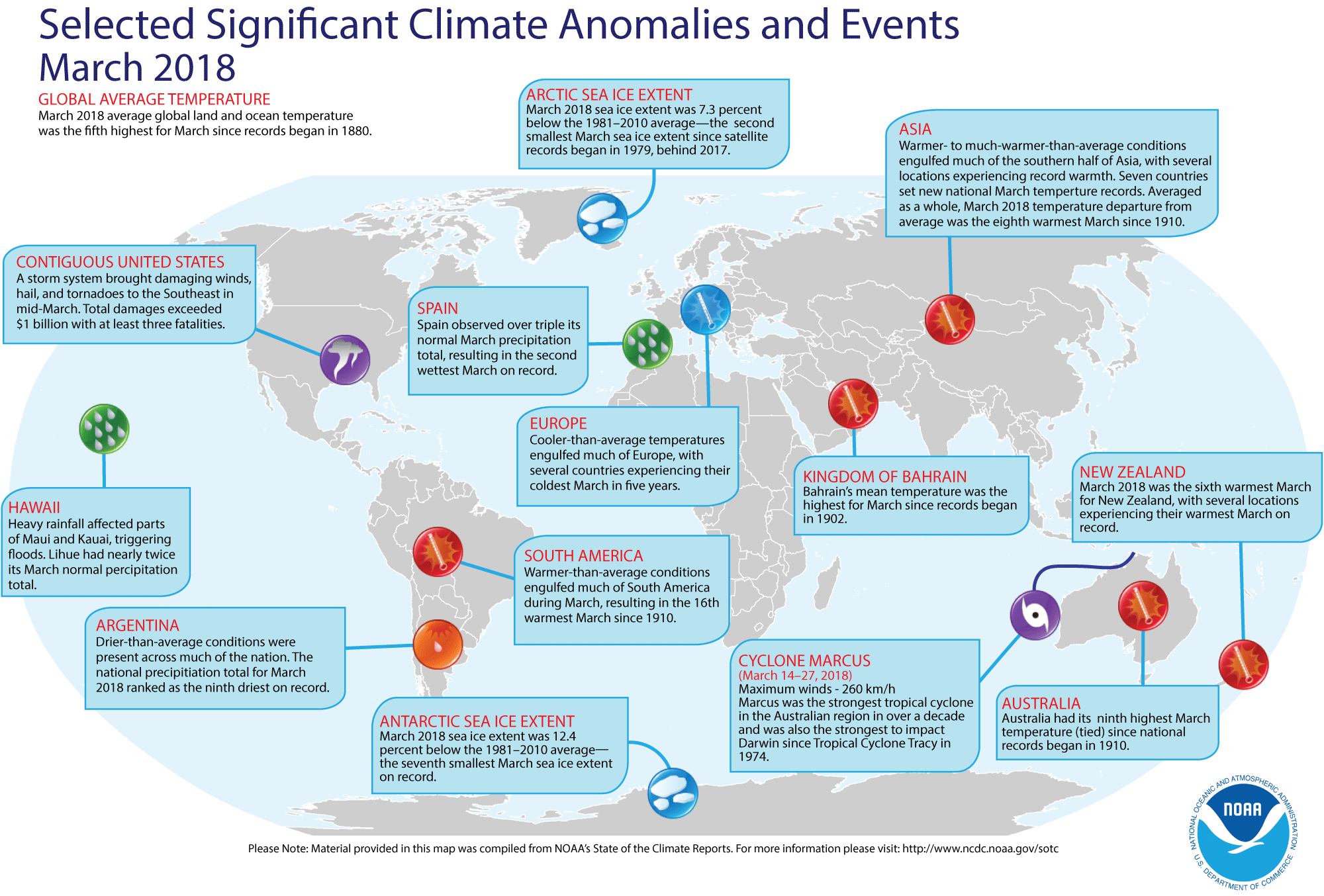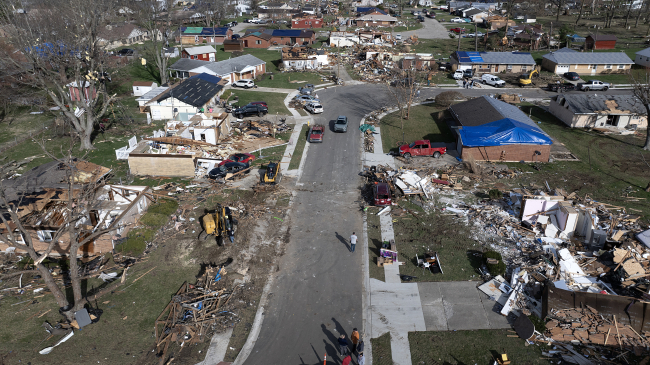Arctic sea ice coverage was 2nd smallest on record
Taken as a whole, the globe just had its fifth warmest March on record, but temperatures varied markedly across the continents.

A collage of typical climate and weather-related events: heatwaves, drought, hurricanes, wildfires and changes in sea ice coverage. (Image credit: NOAA)
Much of the Middle East and Central Asia saw well-above-average warmth, and several countries set new national March temperature records. Meanwhile, cooler-than-average conditions engulfed most of Europe; some countries experienced their coldest March temperatures in five years.
Let’s see how the Earth fared last month and for the year to date, according to NOAA’s latest monthly global climate analysis:
Climate by the numbers
March 2018
The average global temperature in March 2018 was 1.49 degrees above the 20th century average of 54.9 degrees. This was the fifth highest for March in the 139-year record (1880-2018). March 2018 also marks the 42nd consecutive March and the 399th consecutive month with temperatures above the 20th century average.
The year to date | January–March 2018
The year-to-date average global temperature was 1.33 degrees F above the 20th-century average of 54.1 F. This was the sixth warmest average temperature for the year to date on record and the coolest such period since 2014.

Other notable climate facts and stats
Low sea ice at the poles persists
-
The average Arctic sea ice coverage (extent) in March was 7.3 percent below the 1981–2010 average, the second smallest extent since records began in 1979. On March 17, the Arctic sea ice extent reached its annual maximum at 5.6 million square miles, the second smallest on record. The four smallest Arctic sea ice maximum extents have occurred in the last four years.
-
Antarctic sea ice coverage in March was 12.4 percent below average, the seventh smallest on record for March.
Warmer-than-average lands and oceans
-
The globally averaged land-surface temperature ranked seventh warmest for the month March and sixth warmest for the year to date (January–March).
-
The globally averaged sea surface temperature was fifth warmest for both March and the year to date.
Africa led the continents in warmth rankings
-
Africa had its fourth warmest March on record; Asia, its eighth; Oceania, its ninth; South America, its 16th; North America, its 19th; and Europe, its 69th.
More > Read NOAA’s monthly climate reports, and download related maps and images.



